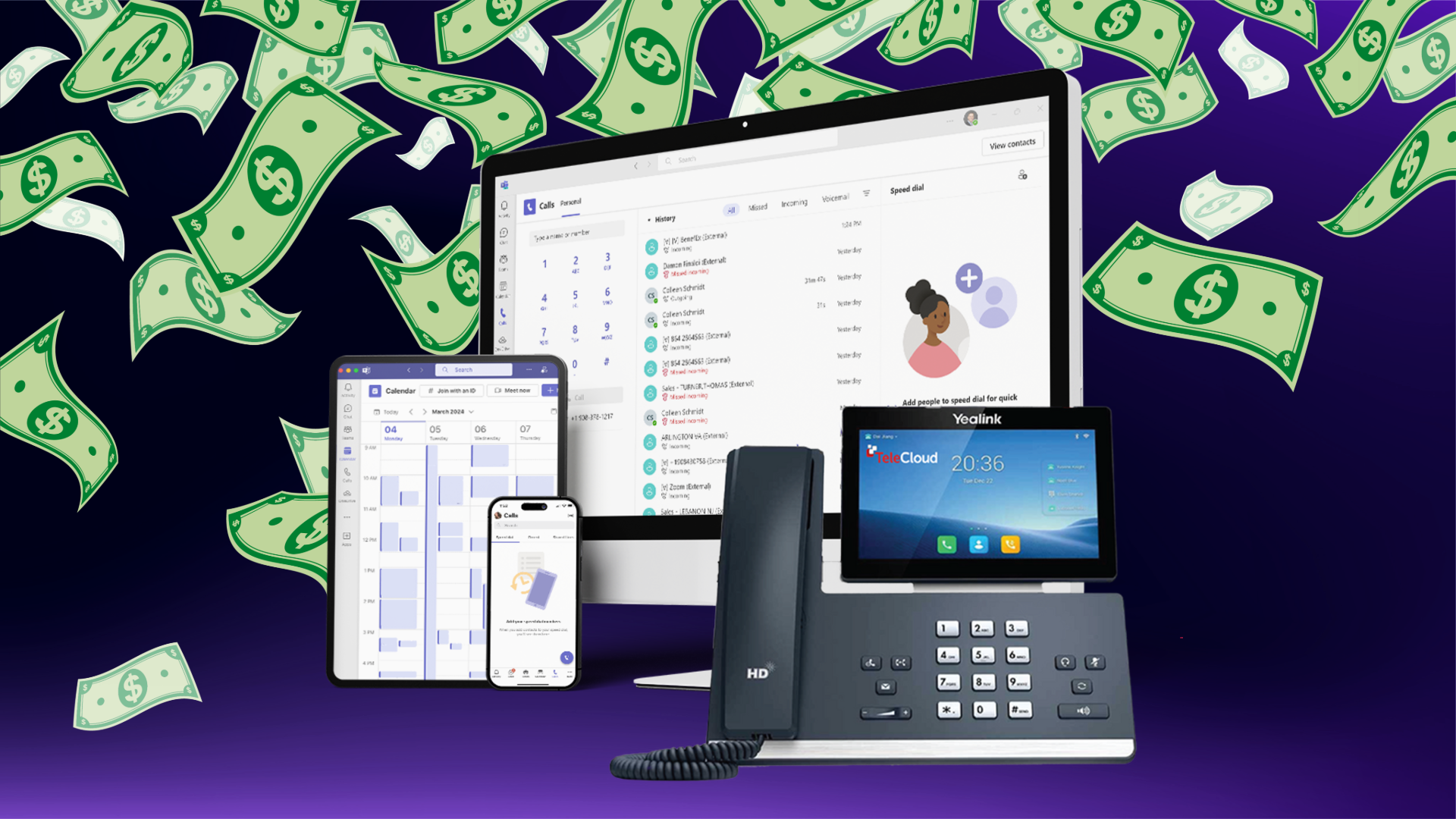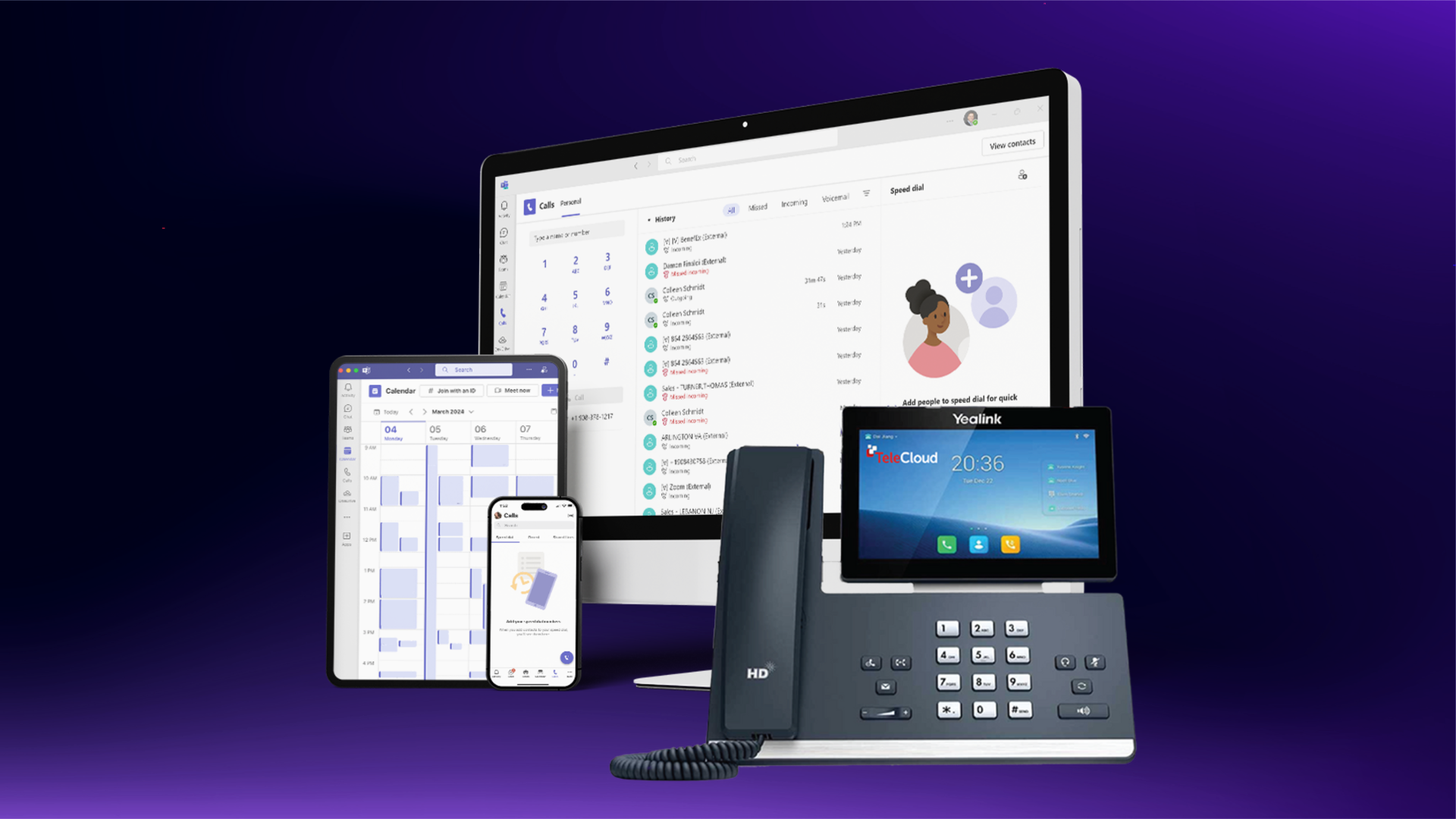How Can I Use Microsoft Teams Calling for My Business?
Updated: April 30th, 2025 | Published: July 22nd, 2022
4 min read

If Microsoft Teams is at the heart of how your business operates, you're in good company. Millions of organizations depend on Teams every day for meetings, file sharing, and collaboration. But many companies ask the next logical question:
“Can we also use Teams as our full business phone system?”
The answer is yes, but how you get there (and whether it's the right move for you) depends on your goals, your IT setup, and the path you choose.
At TeleCloud, we've helped hundreds of businesses successfully integrate Teams calling without losing the features, control, or support they rely on.
Whether you’re just exploring options or ready to move forward, this guide will walk you through how Teams calling works, what you need to get started, and how to avoid common pitfalls during setup.
What Is Microsoft Teams Calling, and Why Use It?
Microsoft Teams Calling allows your employees to make and receive external phone calls right from the Teams app they already use for chat and meetings. It turns Teams into a full phone system interface, allowing features like:
- Direct dial and call forwarding
- Voicemail and call history
- Call transfer and hold
- Simultaneous ringing across devices
- Mobile, desktop, and web access
The big appeal? Everything lives in one place. No more bouncing between apps or devices, just seamless, integrated communication.
What Do You Need to Enable Microsoft Teams for External Calling?
Before your team can start making and receiving external calls directly from Microsoft Teams, there are two key requirements to have in place:
1. Microsoft 365 Licensing with Teams Phone Add-On
Most businesses already have Microsoft 365 licenses, which include access to Microsoft Teams for internal communication, file sharing, and meetings.
But to enable external phone calls (i.e., dialing out to real phone numbers), you need to add the Microsoft Teams Phone license, an additional service that unlocks business telephony capabilities.
Here’s what you’ll need:
- A Microsoft 365 plan that includes Microsoft Teams (most businesses already have this)
- A Teams Phone license
This unlocks calling features such as:
- Making and receiving external calls
- Call transfer, hold, and forwarding
- Voicemail and call queues
- Simultaneous ringing across devices
However, the Teams Phone license only enables the software functionality. You still need a way to connect Teams to the Public Switched Telephone Network (PSTN), the traditional phone network.
That’s where the second piece comes in.
2. A Way to Connect Microsoft Teams to the Phone Network (PSTN)
Once your users are licensed for Teams Phone, you still need to decide how those calls will reach the outside world.
This is the technical and strategic decision point for most companies. You need to choose a method of delivering PSTN connectivity to Microsoft Teams.
You have three general paths:
- Microsoft Calling Plan: Microsoft acts as your telecom carrier and assigns your business phone numbers.
- Operator Connect: You choose from a shortlist of Microsoft-certified telecom providers who connect their network directly into Teams.
- Direct Routing / SIP Integration: You connect Teams to your existing or preferred VoIP provider, often through a managed integration.
Each option has its pros and cons, but what most businesses want is a way to keep things simple without sacrificing flexibility, features, or fast support.
That’s where providers like TeleCloud offer a smarter, more guided path forward.
What’s the Simplest Way to Use Teams for Business Calling?
For most growing companies, the simplest and most effective way to enable Teams Calling is by integrating Microsoft Teams with a trusted VoIP provider, not starting from scratch or relying fully on Microsoft for everything.
With TeleCloud’s managed Teams integration:
- You keep your existing phone numbers, call flows, and advanced VoIP features.
- Your employees make and receive calls from within Microsoft Teams on desktop, mobile, or web.
- You don’t need to manage complex infrastructure like SBCs or SIP trunks internally.
- You get hands-on onboarding, support, and maintenance from a dedicated telecom partner, not a Microsoft ticket queue.
It’s the easiest way to give your team the Teams interface they’re already using while still benefiting from the full power of a modern business phone system with features like:
- SMS and business texting
- Call center and call queue management
- Visual voicemail and call recording
- CRM integrations and analytics dashboards
Bottom line? You don’t have to give up what works just to move into Teams. With the right integration partner, you can enhance Teams, not just use it.
What Does the Setup Process Look Like?
We make the process simple and seamless. Here’s what happens when you integrate Teams calling with TeleCloud:
- IT Coordination – We work with your Microsoft admin to approve integration securely.
- User Syncing – We match existing phone extensions to your Teams users.
- Connector Setup – We create a Teams “bridge” that allows seamless calling through our platform.
- Training & Testing – Your team is trained and calls are tested to ensure a smooth go-live.
And if you’re already a TeleCloud customer, most of your system is already built. We simply connect the dots to Teams.
Is Microsoft Teams Right as Your Business Phone Interface?
If your employees live in Teams already, the answer is likely yes.
Using Microsoft Teams for calling allows your team to stay focused, productive, and unified without switching tools. But it’s important to implement it the right way, with the right support.
Microsoft Teams Calling, Done Right
Using Microsoft Teams as your business phone system isn’t about choosing between Microsoft or another provider, it’s about making Teams work better for your business.
With the right integration, you can turn the platform your team already uses into a complete communication hub, without giving up the features, control, or support you depend on.
Whether you're trying to simplify your tools, enable remote work, or bring consistency to your customer experience, Teams Calling can be a powerful upgrade if it's done right.
And with TeleCloud, you don’t have to figure it out alone.
We’ll guide you through your options
Handle the technical setup
And ensure your phone system is built to support your goals, not hold them back
Let’s find out if Teams Calling is the right move and how to make it work seamlessly for your business.
vin@telecloud.net OR call/text 908-378-1218





